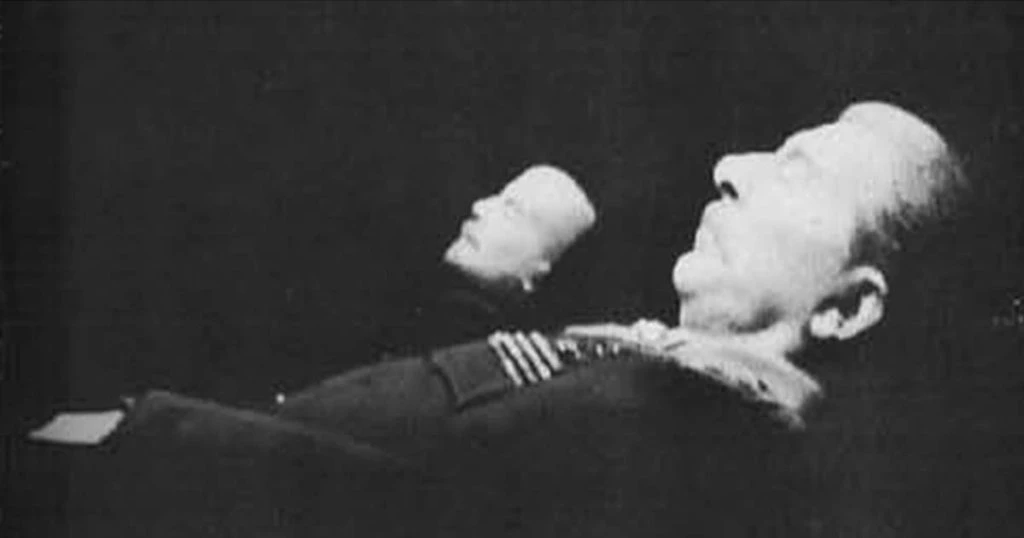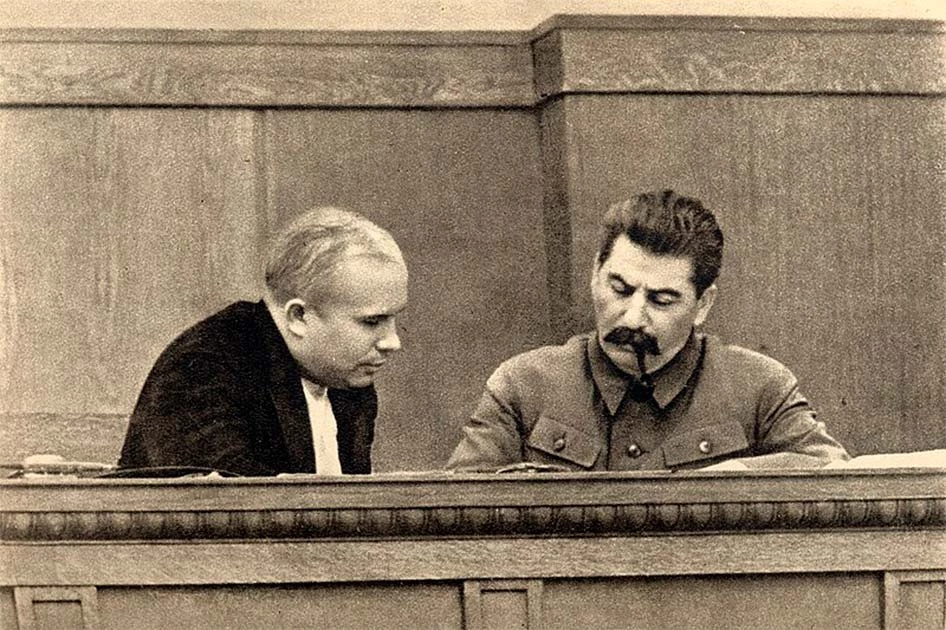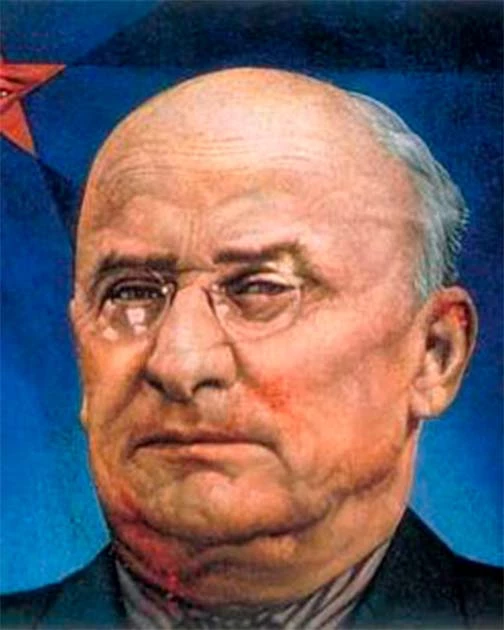Long after his death, Joseph Stalin, leader of the Soviet Union from 1924 until 1953, remains a subject of intrigue and speculation. He is officially recorded as succumbing to a cerebral hemorrhage on March 5, 1953, but the circumstances surrounding his death have sparked persistent theories of foul play.
Was Stalin’s passing a result of natural causes, or did political machinations lead to his untimely end? To try and find an answer one has to wade through the numerous conspiracy theories, examine the official narrative, and take a look at the potential suspects.
Who might have wanted Stalin dead? Pretty much everyone. But that doesn’t necessarily mean he was murdered.
What do we Know?
Before we jump into the murky waters of conspiracy, let’s take a look at the official record. The official cause of his death, as recorded on March 5, 1953, was a cerebral hemorrhage (bleeding on the brain).
A cerebral hemorrhage can be caused by lots of things including, high blood pressure, aneurysm, head trauma, blood-thinning medications, blood disorders, and age. And Stalin’s lifestyle, what little we know of it, would certainly place him in a high risk category.
Since Stalin was 73 at the time of his passing and had either had a heart attack or a series of strokes in 1945, a cerebral hemorrhage wasn’t too shocking. Stalin’s health had been failing for a while and his doctor had told him two years previously to take things easy.
Not that Stalin had listened to his doctor’s advice. Instead, he had the doctor arrested and charged for being a spy. How dare someone question the health of the Soviet Union’s mighty leader. This all made it easy for the Soviet government, then under a veil of secrecy, to portray Stalin’s passing as a consequence of natural health complications.
Stalin’s personal physician, Dr. Vinogradov, played a leading role in the official narrative, asserting that the leader’s health had deteriorated due to long-standing cardiovascular issues. However, the lack of transparent information surrounding Stalin’s illness and the abrupt nature of his death raised suspicions among both contemporaries and later historians. The question lingers: was this truly a natural end or the result of a more sinister design?
Unfortunately, as with most conspiracy theories, there’s not a lot of actual evidence that Stalin was poisoned. It was a long time ago and as we’ve already covered; the Soviets were pretty good at keeping secrets. Much of the “evidence” boils down to an “it seems like the kind of thing the Soviets would do” mentality.

The fact Stalin died so suddenly, and the rapid progression of his illness leading to his death is often seen as a key piece of evidence. The abruptness of his demise, combined with the limited information released, has fueled speculation that a more orchestrated event may have transpired. The lack of a detailed and transparent medical record adds to the mystery.
Especially since no autopsy was ever released. That looks really suspicious. In contrast to common procedures for high-profile figures, no detailed examination was conducted, leaving room for speculation and conspiracy theories. What plausible reason could there be other than a cover-up?
The arrest and prosecution of individuals close to Stalin, including his personal physician Dr. Vinogradov, has also raised eyebrows. The fact that those in proximity to the leader were accused of intentional harm implies a deeper layer of complexity to his death. The purges that followed Stalin’s passing also suggested internal power struggles, adding weight to the theory that his death was not solely a result of natural causes.
There’s also the simple fact that Stalin was making a lot of enemies in the run-up to his death. The year before he died Stalin had summoned the first Communist Party Congress in over a decade.
Given his advancing age and rumors about his health, those who attended expected him to lay out who in the party would eventually succeed him. Instead, Stalin used it as an opportunity to re-emphasize he was in charge, and it would remain that way.
Rather than looking to the future, Stalin ensured the congress was a chance to shake up the Kremlin. He brought in a crowd of fresh faces, putting relative newbies in positions of power in a manner “designed to conceal and confuse the lines of succession rather than clarify.”

Unsurprisingly, this seriously upset many of his long-term allies who had long dreamed of personal glory in the future. Things were only made worse in the winter of 1953 when Stalin began targeting Soviet Jews. This threatened to upheave much of the Soviet Union’s leadership and the Soviet Union itself, leading some to argue it was the straw that broke the camel’s back.
Meet the Suspects
Again, there’s no evidence Stalin was poisoned, let alone who may have done it. Still, we can make some educated guesses. Those who believe he was poisoned usually argue that his murderer came from within his own ranks.
- Beria: Stalin’s Monster and the Tyranny of Soviet Russia
- Dictator by Default? Syngman Rhee and the South Korean Elections
Lavrentiy Beria, the head of the NKVD (Soviet secret police), is frequently implicated in conspiracy theories surrounding Stalin’s death. Beria, known for his cunning and ruthlessness, may have seen Stalin’s declining health as an opportunity to consolidate power and avoid potential purges that could target him, especially since he’d recently fallen out of favor with the dictator.
His position within the Soviet hierarchy and his subsequent rise to power after Stalin’s death fueled suspicions of his involvement. As the head of the NKVD a clandestine poisoning also seems like it would be within his skillset.

Other members of Stalin’s inner circle, such as Nikita Khrushchev (one of Stalin’s oldest allies) and Georgy Malenkov (who briefly succeeded Stalin), are also considered potential suspects. The power vacuum left by Stalin’s passing presented an opportunity for these figures to reshape the political landscape. The internal power struggles and political maneuvering that followed further fueled speculation about the motives of those who might have orchestrated Stalin’s demise.
But all this must remain conjecture. Stalin’s death remains a compelling puzzle and it’s likely that with the lack of concrete evidence, the shadows of suspicion will continue to linger.
While circumstantial evidence fuels theories of foul play, the elusive truth remains obscured. The suspects within Stalin’s inner circle add layers to the intrigue, but definitive answers remain elusive.
Stalin had many enemies and made more with each breath he took. By the time of his death, it’s likely that even his closest allies were among those who wanted him dead. Stalin had fostered an atmosphere that encouraged subterfuge and backstabbing. He had just become too arrogant to believe anyone might succeed in doing it to him.
Maybe one day we’ll know the truth of what happened to him, but that day is not today.
Top Image: The death mask of Joseph Stalin. Source: shankar s / CC BY 2.0.